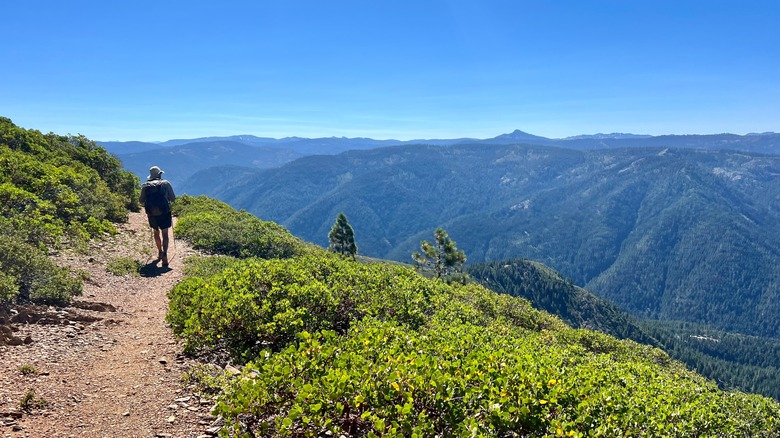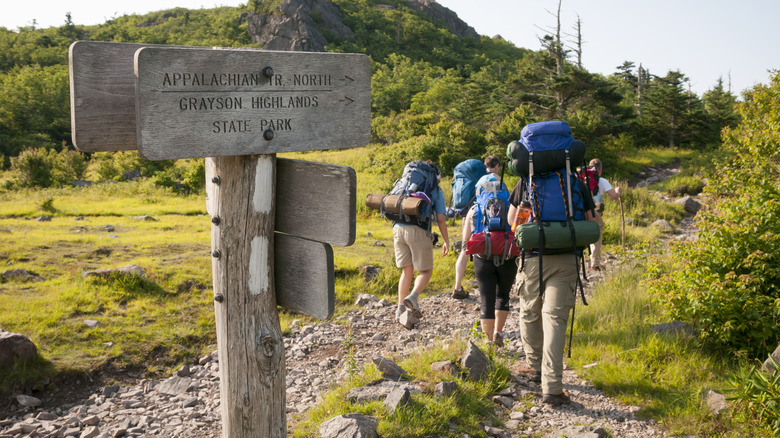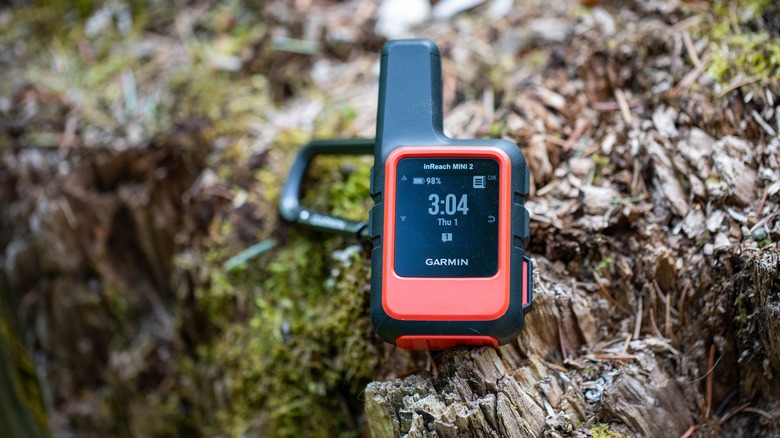The Best Ways To Stay In Touch With Your Loved Ones While Thru-Hiking
Hiking for nine hours on a wild trail like California's Lost Coast might seem like a long trek for many, but epic thru-hiking journeys such as the Pacific Crest Trail and the Appalachian Trail take the average thru-hiker more than five months. These treks go well beyond the standard safety tips for solo hiking. To ensure your well-being, you must have a means of contacting the outside world while on the trail.
Of course, the ability to call 911 remains the no.1 priority, but having the option to reach out to your friends and family back home so that they know your approximate location can prevent emergencies before they happen. Everything from basic hiking strategies like creating trip plans for your loved ones in advance to tech solutions like satellite phones can help.
Even if you never experience any emergencies that you require assistance with, for those left behind, a loved one hiking alone through the wilderness can prove terrifying — especially when they can't get in contact for days or even weeks at a time. You can keep your relationships with your loved ones strong, even when away for months on end, but you must communicate and have conversations about how often you'll be able to touch base.
Make a plan with your loved ones
Before you set out, you'll need to figure out what route to travel, and approximately how long it'll take you to get to different locations. As much as you may want to disappear into nature, creating a detailed plan and explaining it to your loved ones will allow you to stay connected while you're away. Many wild places have no cell service, so your friends and family will only know you're safe if you check in at pre-determined times and locations. Giving them an approximate road map can help.
Scheduling these contacts in advance gives your loved ones back home more opportunities to support you and feel connected to you. If they can meet you on the trail, schedule a zero-day where you don't plan to get any miles in — just spend time with them since you have spent so much time apart, and they likely won't be able to match your hiking pace. They may also have the option to send packages to your next stop to make your resupply easier. Since you'll see postcard-worthy scenery as you hike through national parks, consider packing postage stamps so you can mail postcards home from the towns you visit.
Technological solutions to stay connected on a thru-hike
Even though you may not have cell reception at points of the journey, technology can keep you safe and connected to the friends and family waiting for you. Personal locator beacons, like the Ocean Signal Rescueme PLB1, are great solutions for ensuring that you can call for help if you need it — but they don't help you keep in touch with your brother, partner, or bestie. For that, you'll need something like the Garmin inReach Mini 2, which lets you send texts and emails to people back home (or others on the trail) even if you don't have service. It will also periodically share your location when you want it to.
You may also want to discuss expectations with your friends and family for when you're on the trail. As connected as tech can make you feel, you will still be far away. There may be periods of time when you can't check in as often as you would like (or the time between your scheduled check-ins feels longer than you could've imagined).


